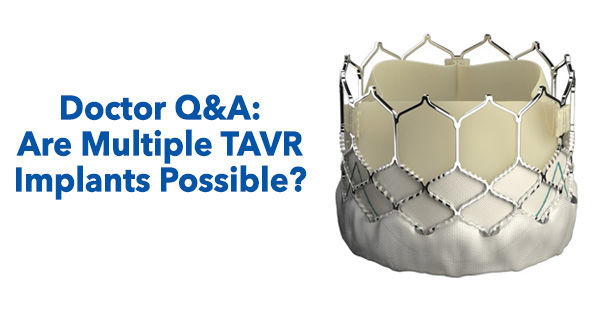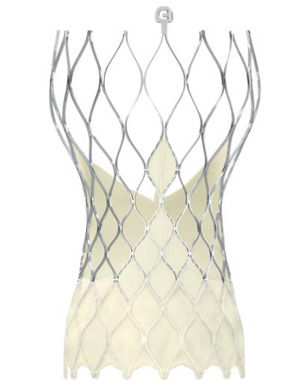"Are Multiple TAVR Implants Possible?" asks Susan
Written By: Adam Pick, Patient Advocate, Author & Website Founder
Medical Expert: James Wudel, MD
Page Last Updated: May 13, 2025
With the latest news about the success of the low-risk transcatheter aortic valve replacement (TAVR) clinical trials for the SAPIEN and EVOLUT devices, patient questions about TAVR keep rolling in.
Just a few days ago, Susan asked me, "Adam, Is multiple TAVR use possible?"

To answer Susan's question, I reached out to Dr. James Wudel, a leading heart surgeon. As you might recall, Dr. Wudel has helped educate our community about many TAVR topics over the years. Those topics include TAVR accesss points, TAVR for bicuspid valves and the FDA approval of Valve-in-Valve TAVR.
 Dr. James Wudel (Heart Surgeon)
Dr. James Wudel (Heart Surgeon)
Here are the highlights of my exchange with Dr. Wudel about multiple TAVR implants:
1. What is your personal experience using TAVR in your practice?
I started performing TAVR in 2011 at the Nebraska Heart Institute. We were one of the first commercial sites in the United States. In addition, the hospital was part of the PARTNER II clinical trial which started in 2012. We also participated in the PARTNER III clinical trial that investigated the use of TAVR in low-risk patients.
Over the years, I have either performed or proctored more than 450 TAVR cases.
2. What attracted you to TAVR clinical research?
In 2006, I was attending a surgical conference in Chicago when I saw a video of TAVR procedures being performed in France. It was one of the first TAVR procedures performed in the world. That was disruptive and eye-opening at the same time.
I thought to myself, "TAVR has the possibility of transforming aortic valve replacement therapy."
3. How has TAVR changed over the years?
There have been several geometric changes to the procedure during a very short period of time.
The knowledge-base and experience with the procedure has increased so much - along with improved imaging modalities, access sheath improvements, and of course, the valves themselves.
Many of the TAVR devices are already in their 3rd or 4th generation.

Evolut TAVR (Medtronic)
What has really helped this procedure blossom is the fast dissemination of data, experience, and techniques via social media and how we learn in the modern era.
4. Are TAVR valves durable?
The question about TAVR durability is a common and an important question. What is clear about TAVR is that durability in the older population is not a concern and the valve performs well.
We know from data specific to surgical aortic valve replacement (SAVR) literature however, that bioprosthetic valves made from the pericardial tissue of a cow - like a TAVR valve - can deteriorate more rapidly in a younger population. This means that a repeat surgical valve re-operation is more likely for the patient.
With that said, the early durability of the TAVR valve, at least through 5 years, is encouraging. The Low Risk TAVR trials will follow patients for up to 10 years to better evaluate their durability over time in younger patient populations.
5. Why might a TAVR valve fail?
TAVR valves can fail for a number of reasons:
- infection
- low grade thrombus/clot on the leaflets
- sub-optimal implantation
- accelerated calcification
So you know, none of these issues are necessarily unique to TAVR valves. Each failure reason above can impact surgical aortic valves as well.
6. Can all patients with a failed TAVR valve get another TAVR implanted?
Can a TAVR valve procedure be repeated? Said differently, "Can I get a TAVR in a TAVR after the first one fails?"
The answer is likely to be yes, but not necessarily.
Our understanding of repeat TAVR implants is in the early stages. Some of the anatomic issues being investigated that may affect the answer are: the size of the first valve, its proximity to the origins of the coronary arteries, and aortic root angulation.
There may be other issues that become apparent in the future.
7. What are the options for a patient who has a failed TAVR and can not get another TAVR?
If a patient is wondering, "If my first TAVR fails, can I get surgery?", the answer is yes. Surgical aortic valve replacement has been performed on TAVR valves.
The complexity of the procedure would depend on the type of TAVR valve placed initially, time since implant, and other necessary components of the operation required for a successful outcome.
8. What else should patients know about TAVR performance?
As we expand TAVR into the younger population, valve performance and hemodynamics will play a more important role. That is, we want a valve size appropriate for the patient size - with low aortic valve gradients and minimal leakage.
Pre-procedure planning and a Heart Team discussion is vitally important to optimize these outcomes. And, in fact, anatomic variables in some patients may make surgical AVR the better option.
That said, this is a very excting time for patients needing aortic valve therapy using either TAVR or SAVR.
Thanks Susan, Dr. Wudel & Nebraska Heart Institute
On behalf of our patient community, I would like to thank Susan for her excellent question about multiple TAVR implants. Much appreciated and very timely!
I would also like to thank Dr. Wudel for taking the time to share his clinical research and TAVR experience with us.





